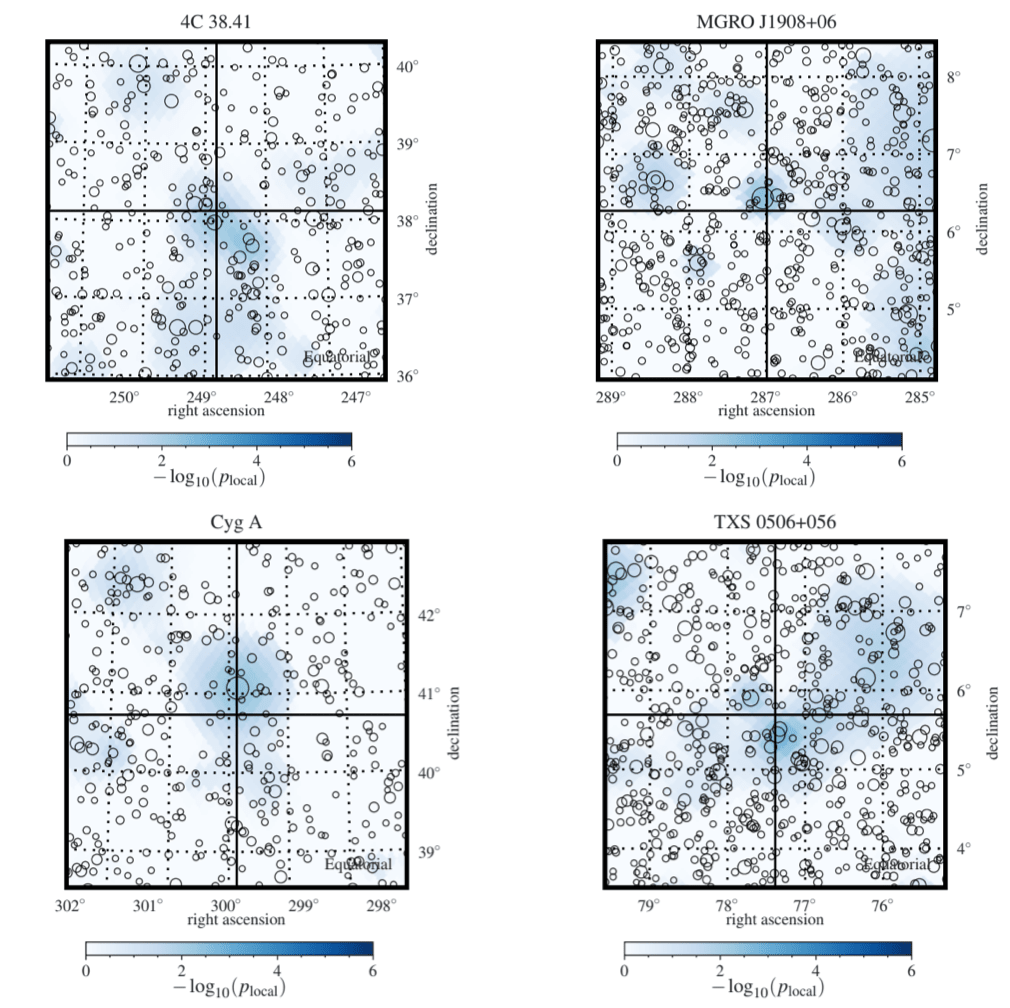As soon as IceCube detected the first astrophysical neutrinos, efforts to find their origins, and thus the origin of cosmic rays, have been growing at a fast pace, driven by new information about the extreme universe. The monitoring of transient sources has resulted in identifying blazar TXS 056+56 as the first likely source of very high energy neutrinos. Yet, the majority of the IceCube neutrino flux is of unknown origin.
In a new attempt to lay siege to the steady sources of neutrinos, the IceCube Collaboration has improved the search for sources in the Northern Hemisphere using muon neutrino data. The new search with eight years of IceCube data and an upgraded event selection and reconstruction resulted in enhanced sensitivity and the most stringent limits yet on emission from steady sources. These results have just been submitted to the journal European Physical Journal C.

Between May 2009 and May 2017, IceCube detected 497,000 upgoing muon neutrinos, most of them created by the interaction of cosmic rays with the atmosphere of the Northern Hemisphere. Given our current knowledge of astrophysical neutrino emission, only 200 to 2400 of these events are of astrophysical origin.
In this new search, which used an improved event reconstruction, scientists looked for point-like sources that would produce a neutrino emission with the same properties as the flux observed by the Antarctic neutrino observatory. By optimizing the analysis in this way, the sensitivity improved by 35% with respect to previous IceCube results.
“Our key concept was to combine and optimize the analysis with IceCube measurements of the astrophysical muon neutrino flux. To do that, we added constraints on neutrino emission—i.e., on the so-called spectral index––and used our best-fit parametrization of the data to improve the background model,” explains René Reimann, a main analyzer of this work and a PhD candidate at RWTH Aachen.
IceCube researchers looked for time-independent clustering of neutrinos both in searches of the full sky and by looking for coincidence emission with known gamma-ray sources. In the full sky search, no single hot spot was identified nor any cumulative excesses that could be due to the presence of several weak sources. When looking for neutrino emission from gamma-ray sources, sources were also tested individually and for a cumulative excess, and no evidence of a neutrino source was found.
Only three sources had a p-value below or close to 1%––4C 38.41, MGRO J1908+06, and Cyg A––but none of the excesses was found to be significant. Scientists also studied emission from TXS 0506+056 and again no significant excess was observed.
“There are a number of interesting fluctuations in the data including the known source TXS. It is too early to draw conclusions, but it remains exciting,” says Christopher Wiebusch, who leads the IceCube group at RWTH Aachen and has long promoted this approach to search for neutrino sources.
IceCube scientists used these nonobservation measurements to set upper limits on neutrino emission from gamma-ray sources as well as constrain the population of neutrino sources.
For a few gamma-ray sources, the limits were set with a multimessenger approach, i.e., they used the gamma-ray flux to constrain neutrino emission. Tested sources were the Crab Nebula, the active galactic nucleus Mrk 421, flat-spectrum radio quasars 3C273 and 3C454.3, and supernova remnant G40.5-0.5 associated with TeV-source MGRO J1908+0. For three of these––Crab Nebula, Mrk 421, and 3C273––the current models were excluded.
info “Search for steady point-like sources in the astrophysical muon neutrino flux with 8 years of IceCube data,” IceCube Collaboration: M.G. Aarsten et al., European Journal C (2019) 79: 234, link.springer.com, arxiv.org/abs/1811.07979